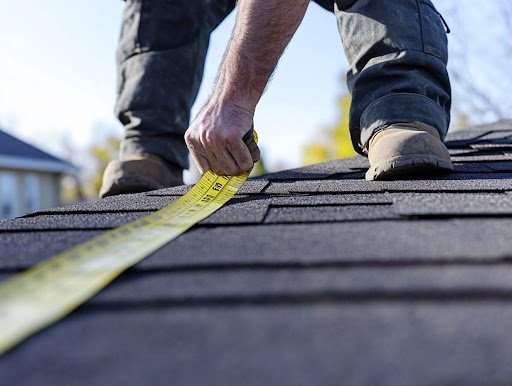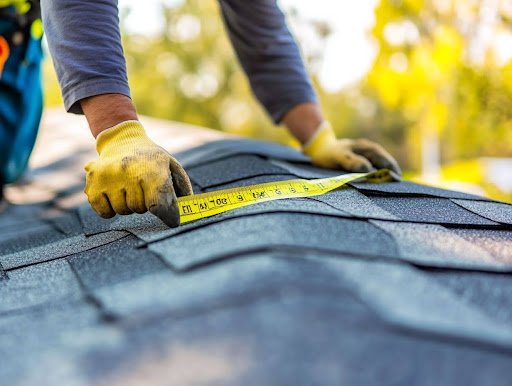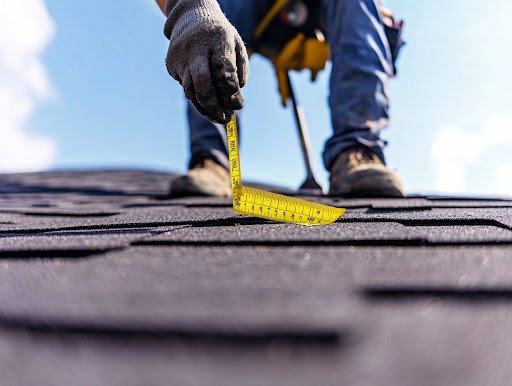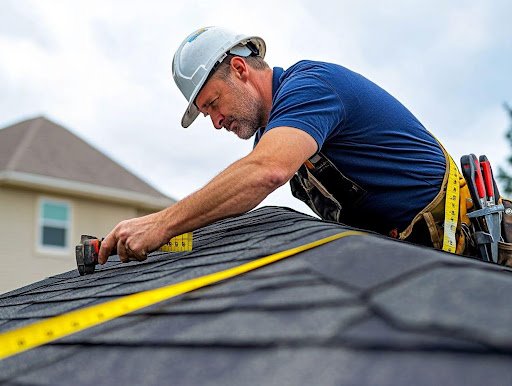How Long Deos Roof Replacement Take?
- Trusted Roofing Professionals Perth
- Free Quotes Available
- Contact Us Now
Replacing a roof is a substantial undertaking that can significantly enhance a home’s safety and longevity. For homeowners in Perth, it is essential to comprehend the average duration required for roof replacement to facilitate effective planning and budgeting. This guide delineates the various factors that influence the timeline, outlines the critical steps involved in the replacement process, and offers insights into the typical duration associated with each step. Additionally, it includes practical recommendations to expedite the process, ensuring that the roofing project proceeds as smoothly as possible.
Key Takeaways:
- On average, roof replacement in Perth can take 1-2 weeks, but this can vary depending on factors such as the size of the roof and the materials used.
- The steps involved in a roof replacement include inspection, obtaining permits and materials, removing the old roof, repairing the roof structure, installing the new roof, and a final inspection.
- Each step of the roof replacement process can take 1-2 hours (inspection) to 3-5 days (installation of new roof). Having a reliable contractor, necessary permits and materials prepared, and clear communication can help speed up the process.
What is the Average Time for Roof Replacement in Perth?
In Perth, the average duration for roof replacement and home renovations can vary substantially due to several factors, including the type of roofing materials selected, the complexity of the project, and the expertise of the roofing contractors involved.
Additionally, local weather conditions, roof accessibility, and any pre-existing structural damage are critical elements that can influence the overall timeline for completing a roof replacement project. Depending on these variables, homeowners should be prepared for timelines extending from several days to weeks. Efficient planning and professional contractors can also impact the duration.

Factors that Affect the Time of Roof Replacement
Several factors can significantly influence the duration of a roof replacement project, including the choice of roofing materials, the competency of the roofing contractors, and the prevailing weather conditions that may cause delays. Professional roofers and local weather conditions are vital considerations.
Homeowners need to comprehend the intricacies of these elements to ensure a successful roofing endeavour. For example, the type of roofing material selected can significantly impact installation time. Asphalt shingles typically allow for quicker installation due to their lighter weight, whereas tile roofing may extend the timeline due to the necessity for precise alignment and additional structural support.
Moreover, the level of experience of the roofing contractors is a critical factor; highly skilled professionals are adept at navigating challenges efficiently, thereby minimising potential delays. Adverse weather conditions, such as rain or strong winds, complicate the installation process and require strict adherence to safety precautions to safeguard workers and materials.
Without proper planning and effective project management, timelines may be significantly prolonged, underscoring the importance of meticulous preparation and expert guidance.
What are the Steps Involved in Roof Replacement?
The roof replacement process encompasses several critical steps to achieve an efficient and high-quality result. A comprehensive roof inspection assesses the existing structure and identifies any required repairs.
Following this evaluation, obtaining the necessary permits and selecting the appropriate roofing materials is essential. The subsequent step involves removing the old roof, which allows for any necessary structural repairs to be addressed before installing the new roofing system.
Finally, the site undergoes a thorough clean-up and inspection to ensure all work meets established quality standards.
Roof Inspection
The initial step in the roof replacement process involves conducting a comprehensive inspection to evaluate the condition of the existing roofing materials and identify any indications of structural damage.
This critical assessment reveals visible wear and tear and highlights potential issues, such as leaks, which can lead to more significant problems if not addressed promptly. Homeowners should recognise that professional roofing contractors adhere to a systematic approach during this inspection. Typically, they begin by examining the roof’s surface for cracks, loose tiles, or signs of deterioration.
- They may also assess the gutters and downpipes to ensure proper drainage.
- Following their visual inspection, they frequently perform tests to evaluate the integrity of the materials.
Homeowners must anticipate a comprehensive evaluation report that details any findings and offers actionable recommendations. This document will be crucial for planning subsequent roof maintenance or replacement steps.
Obtaining Permits and Materials
After the inspection, obtaining the necessary permits and selecting quality roofing materials for a successful roof replacement project is essential.
Understanding local regulations regarding roofing permits is crucial for avoiding potential fines and ensuring compliance with safety standards that protect both the workers and the structure.
Prospective homeowners should be informed about the various roofing materials available, such as metal, tiles, or asphalt shingles, each providing distinct benefits and aesthetic options.
Conducting thorough research and consulting with professionals can significantly improve the planning phase, leading to effective budgeting that accounts for all aspects of the project.
This foresight will ultimately streamline the process, resulting in a more efficient and satisfactory outcome.
Removal of Old Roof
Removing the existing roof is a critical step in the roof replacement process, as it entails carefully removing current roofing materials and assessing any underlying structural damage.
To ensure this process is executed effectively, roofing contractors must prioritise safety precautions throughout the removal phase. Equipped with essential tools such as:
- Cardboard or tarpaulins to protect the landscape below
- Chalk lines for precise cutting
- Heavy-duty gloves and safety goggles
- A hydraulic lift for elevated work
Contractors can significantly minimise hazards and prevent injuries. During the detachment of materials, it is imperative to remain vigilant for signs of wood rot or water damage that may not be immediately evident.
This thorough examination establishes the necessary groundwork for any repairs to the underlying structure before installing the new roofing system, ensuring a solid foundation for the years ahead.

Repairing the Roof Structure
Once the old roof has been removed, addressing any necessary repairs to the roof structure is imperative to ensure a solid foundation for the new roofing materials.
This process involves comprehensively inspecting the underlying structure to identify areas requiring attention. Common types of repairs include:
- Addressing structural damage caused by prolonged exposure to harsh weather conditions may have weakened key components.
- Reinforcing support beams to accommodate the weight of the new materials and provide protection against future stress.
- Replacing rotting plywood or damaged insulation that could compromise energy efficiency.
High-quality materials are essential for contributing to the durability and lifespan of the new roof. By investing in superior options, homeowners protect their property and enhance its overall value, ensuring that their investment provides lasting protection and peace of mind.
In this process, maintaining structural integrity should never be overlooked.
Installation of New Roof
The installation of a new roof marks a critical stage when the selection of roofing materials becomes essential. Roofing contractors adeptly apply these materials to establish a durable and energy-efficient covering for the property.
During this phase, various materials, including tiles, metal, and asphalt shingles, are employed, each necessitating specific techniques for proper installation. Roofing contractors ensure that:
- Tile roofs are installed in overlapping rows to facilitate adequate water drainage and enhance aesthetic appeal.
- Metal roofs are assembled using interlocking panels to prevent leaks and bolster structural integrity, and insulation and thermal efficiency are carefully considered.
- Asphalt shingles are layered precisely, ensuring proper alignment and fastening to withstand wind and weather variations.
Experienced professionals underscore the significance of proper insulation when installing underlayment and ventilation systems, which contributes to the home’s energy efficiency.
Through their expertise, roofing contractors not only enhance the visual appeal of a property but also improve its long-term functionality.
Clean-up and Final Inspection
Following the installation of a new roof, a comprehensive clean-up is imperative, accompanied by a final inspection to verify that all work adheres to established quality standards. This phase may involve additional costs but ensures thorough compliance and quality assurance.
The clean-up process is crucial, as it enhances the property’s aesthetic appeal and ensures the safety of the work area. Removing debris, leftover materials, and equipment is essential in preventing potential hazards that could result in accidents or injuries.
The following points can underscore the significance of this process:
- Improved operational safety for both workers and residents
- Minimised risk of environmental impact due to discarded materials
- Promotion of a professional image for the roofing company
The final inspection confirms that the installation complies with local building regulations. It validates that high-quality roofing materials have been utilised, safeguarding the roof’s longevity and durability.
Adhering to these steps not only protects the investment but also provides reassurance to the property owner, who should also consider warranties offered by their contractor.
How Long Does Each Step of the Roof Replacement Process Take?
Understanding the duration of each step in the roof replacement process is essential for homeowners in Perth. This knowledge enables them to effectively plan their renovations and manage expectations regarding their roofing projects.
Roof Inspection: 1-2 Hours
A roof inspection typically requires approximately 1 to 2 hours to complete, depending on the size of the roof and the extent of potential damage that must be evaluated.
The duration of the inspection can vary significantly due to several key factors that influence the scope of work required. For example, roofs with more complex designs, such as multiple slopes, dormers, or unconventional materials, may necessitate a more extended evaluation period.
The size of the roof is another critical factor, as larger areas will inherently require more time for inspection.
It is essential to engage the services of experienced roofing contractors with the requisite knowledge and skills to swiftly and accurately identify potential issues. Their familiarity with various roofing systems enables them to pinpoint problems effectively, thereby enhancing the overall efficiency of the inspection process.
Key factors affecting the inspection duration include:
- Roof size
- Roof complexity
- Contractor experience
The interplay of these factors ultimately determines the timeframe of a roof inspection, underscoring the importance of relying on professionals who can deliver a comprehensive assessment promptly.

Obtaining Permits and Materials: 1-2 Weeks
Obtaining permits and sourcing the necessary materials can take one to two weeks, depending on local regulations and material availability.
This timeline is critical for any roofing project, as delays in securing the appropriate permits can postpone the entire schedule. Each locality has specific regulations that dictate the types of permits required and the timeframe for their approval. Therefore, understanding local regulations must ensure all documentation is submitted accurately and promptly.
Having roofing materials ready before installation is imperative for a seamless operation. Disruptions caused by waiting for materials can result in additional costs and extended project durations. Consider the following strategies:
- Research local permitting processes in advance.
- Maintain a checklist of required materials to ensure nothing is overlooked.
- Cultivate relationships with suppliers to facilitate expedited material availability.
By adhering to these recommendations, individuals can effectively navigate the permitting process and material acquisition, laying the groundwork for successful roofing installations.
Removal of Old Roof: 1-2 Days
Removing an old roof typically requires one to two days, depending on the types of roofing materials used and the size of the structure. Several factors significantly influence the duration of this process.
Material types, such as asphalt shingles, metal roofing, or tiles, each present unique challenges that can affect the removal time. Additionally, the following factors play critical roles in determining the duration of the removal process:
- Complexity of the existing roofing system
- Number of layers to be removed
- Structural condition of the roof underneath
Seasonal variations and weather conditions can also impact safety and accessibility, necessitating careful planning to ensure the operation proceeds smoothly. During the removal phase, safety is paramount; workers and surrounding property must be protected against potential hazards. Therefore, it is essential to adhere to best practices throughout the process.
Repairing of Roof Structure: 1-2 Days
The duration required for repairing the roof structure typically ranges from one to two days, depending on the extent of structural damage identified during the inspection.
The specific type of repairs required can vary considerably, impacting the timeline and the methodology employed. Common issues that may arise include:
- Tile replacement: Replacing missing or curled tiles is essential to prevent potential leaks.
- Structural reinforcement: In situations where the structural supports are compromised, it may be necessary to reinforce beams or trusses.
- Flashing repairs: Damaged flashing around chimneys or vents can result in water penetration, necessitating prompt remediation.
Utilising high-quality materials is critical to ensuring the longevity of these repairs. Additionally, skilled labour is essential for effectively executing these repairs, thereby minimising the likelihood of recurring issues for homeowners.
All of these factors contribute significantly to the overall timeline and the long-term reliability of the roof.
Installation of New Roof: 3-5 Days
Installing a new roof typically takes 3 to 5 days, depending on the selected roofing materials and the roof’s dimensions.
Several factors can significantly affect this timeline, particularly the type of materials chosen. For example, metal roofing may facilitate a quicker installation, as the panels can be positioned rapidly and feature interlocking systems that require minimal fasteners.
In contrast, tile roofs require a more prolonged installation period due to their weight and the need for precise alignment, which can lengthen labour time. Asphalt shingles are generally considered the most straightforward option, enabling roofing contractors to operate efficiently and swiftly.
- Metal: Faster installation, less labour-intensive.
- Tile: Longer installation, requiring careful handling.
- Asphalt Shingles: Easy to install, popular choice.
Therefore, understanding the characteristics of these materials can assist homeowners in anticipating the installation timeline and ensuring they are adequately prepared for the work to be undertaken, including obtaining accurate quotes from roofing contractors such as Vincent Roofing in Queensland.
Clean-up and Final Inspection: 1 Day
The final clean-up and inspection of the new roof generally require approximately one day to ensure that all aspects are in order and compliant with the necessary standards.
This critical phase is a final checkpoint, wherein experienced professionals meticulously evaluate every installation detail. Through this comprehensive assessment, any issues that may have inadvertently arisen during installation can be promptly identified and rectified.
Effectively managing this clean-up process reflects the quality of the workmanship and significantly contributes to the overall satisfaction of the project. A well-organised work site leaves a favourable impression on homeowners, fostering confidence in the roof’s integrity and the professionalism of the team responsible for its installation.
Key benefits of this phase include:
- Ensuring compliance with building codes
- Enhancing the visual appeal of the property, particularly if landscaping elements are present
- Preventing future maintenance issues

What are Some Tips to Speed Up the Roof Replacement Process?
Homeowners can undertake several proactive measures to facilitate an efficient roof replacement process. These include:
- Selecting a reputable roofing contractor,
- ensuring that all necessary permits and materials are prepared in advance, and
- Maintaining open lines of communication throughout the project.
Choose a Reliable and Experienced Roofing Contractor for Your Reroofing Needs
Selecting a reliable and experienced roofing contractor is essential for a seamless Roof Replacement process. Such professionals can effectively navigate challenges and deliver high-quality workmanship in Metal Roofing. Choosing a contractor with a proven track record ensures that the job will be executed correctly and significantly alleviates the stress and uncertainty typically associated with substantial home improvement projects.
When evaluating potential contractors, verifying their credentials and the reputation of roofing contractors within the industry is imperative. The following steps can aid in making an informed decision:
- Check References: Inquire about previous projects and request contact information for past clients. Direct communication with these clients can provide valuable and honest feedback.
- Warranties and Guarantees: Confirm that the contractor offers warranties on both materials and labour. A reputable contractor will stand behind their work.
- Expertise and Experience: Seek contractors with several years of industry experience, specialising in the specific type of roofing required.
By prioritising these factors, homeowners can save time and money while ensuring that their roofing project is completed efficiently and to a high standard.
Have All Necessary Permits and Roofing Materials Ready
Having all necessary permits and materials prepared before commencing the roof replacement can significantly minimise delays and structural damage and facilitate a smooth progression of the project.
To ensure a successful roofing endeavour, the homeowner should meticulously navigate the permit acquisition process by consulting local building codes and regulations. This entails identifying the specific permits required in their jurisdiction, which may vary based on the selected roofing material or the characteristics of the home. Engaging with local authorities early in the planning stages can assist in clarifying expectations and timelines for obtaining approvals.
Timing is of utmost importance in securing roofing materials. Homeowners should begin by establishing a comprehensive budget encompassing permits and materials estimates. Once a budget is formulated, it is advisable to research multiple suppliers to compare costs and availability, ensuring that materials can be ordered well in advance.
- Determine necessary permits
- Engage with local authorities
- Create a detailed budget
- Research suppliers
- Order materials ahead of time
By taking these proactive measures, homeowners can effectively mitigate risks associated with delays and ensure that their roofing project advances without unnecessary interruptions.
Keep the Work Area Clear and Ensure Roof Accessibility
Maintaining a clear and accessible work area is essential for roofing contractors to operate efficiently and complete roof replacement projects on time.
Homeowners can take several practical steps to ensure that this process proceeds smoothly. It is advisable to:
- Clear any landscaping materials or garden furniture.
- Trim overhanging tree branches that might impede access to the roof.
Providing safe access can be accomplished by ensuring that pathways to the roof are unobstructed and adequately lit. Additionally, homeowners should prepare tools and equipment by consulting with contractors regarding specific requirements, such as ladders or scaffolding. This level of preparation enhances the safety of the work environment and demonstrates professionalism, fostering a positive working relationship.
Communicate Clearly with the Roofing Contractor during Home Renovation
Effective communication with the roofing contractor throughout the Roof Replacement process is essential for ensuring that the project proceeds smoothly and aligns with the homeowner’s expectations, taking into account safety precautions and weather conditions.
To maintain a clear and productive dialogue, it is essential to schedule regular updates regarding the progress, timelines, and any unforeseen issues that may arise. These check-ins act as critical touchpoints, enabling both parties to address concerns promptly, thereby addressing problems before they escalate. This proactive approach not only fosters trust but also significantly aids in optimising the project’s timeline.
The following key practices can enhance communication during the roofing project:
- Establish a communication schedule at the outset.
- Utilise various channels like telephone calls, emails, or project management software.
- Encourage openness in discussing any changes or challenges.
By adhering to these practices, homeowners can remain informed and engaged throughout the process, ultimately contributing to a more successful roofing experience.
Frequently Asked Questions
How long does a Roof Replacement take in Queensland?
The duration of a roof replacement project can vary depending on various factors, such as the size and complexity of the roof, weather conditions, and the materials used. On average, a roof replacement in Perth, WA, can take 2-5 days.
What are the steps involved in a Roof Replacement?
The first step in a roof replacement is a thorough inspection to determine the extent of the damage. Then, old shingles and other materials are removed, followed by any necessary repairs to the roof structure. The new roofing materials are installed and inspected for quality and safety before the project is completed.
Does the weather affect the duration of a roof replacement?
Yes, weather conditions can significantly impact the timeline of a roof replacement project. Rain, strong winds, or extreme heat can delay or even halt the project. It is best to schedule a roof replacement when the weather is expected to be favourable.
Do I need to be at home during the roof replacement?
While it is not required, it is recommended that someone be present during the roof replacement. This allows for better communication with the roofers and ensures that any concerns or questions can be addressed promptly.
Can I stay at home during the roof replacement?
In most cases, staying in your home during a roof replacement is safe. However, if significant damage or structural issues exist, it may be necessary to vacate the premises for safety reasons. Your roofing contractor will inform you of potential safety hazards and guide you on the best action.
How do I prepare for a roof replacement?
Before starting the roof replacement project, it is essential to remove any items from the attic and cover any outdoor furniture or plants near the house. To avoid inconveniences, it is also recommended that you inform your neighbours of the upcoming project. Your roofing contractor will provide you with specific instructions on how to prepare for the roof replacement.
